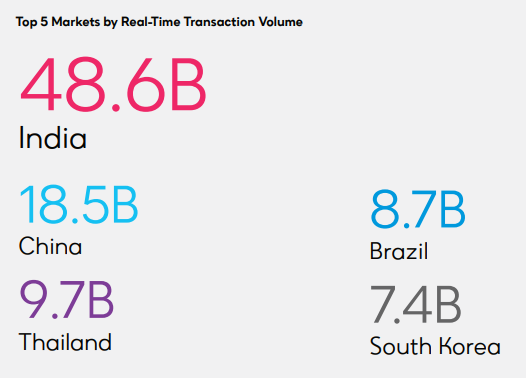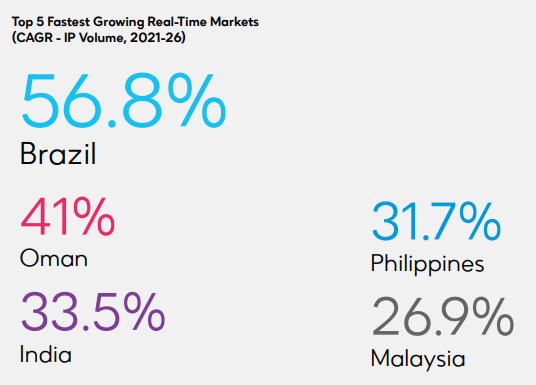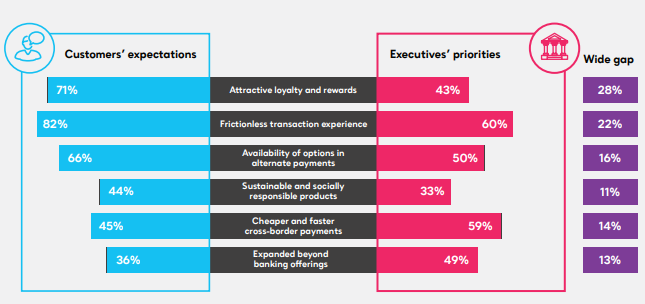Sustained disruption in the world economic arena has prompted the unprecedented growth and an accelerated a shift towards digital payments – and real-time payments specifically. Not only is the future of payments real-time – it’s here now.
But every country is on a different trajectory, and at a different point in their real-time journey. So, what does this mean for you as a payment provider?
Let’s examine the growth and complexity of the real-time payments market, and how it will impact banks and financial institutions, businesses, and customers globally.
Want to know more about how to deal with the complexities of real-time payments? Download our guide.
The growth of real-time payments
Due in large part to the pandemic, the digitization and transformation of the global payments space has been accelerated exponentially. The resulting boost to micro-digital economies in only a few short months is unparalleled in the financial world.
The preference for efficient, fast payment among businesses and consumers is growing. ACI Worldwide revealed that at least 77% of merchants globally are expecting real-time payments to replace physical payment cards.


It’s no wonder that real-time payments are causing a worldwide phenomenon. The ability to transfer and receive funds immediately between individuals, businesses and governments is affecting the way the world does business.
Three key reasons real-time payments are the future
- Digital payments drive opportunity and growth by creating new revenue sources and opportunities.
- Data becomes currency by creating faster, more efficient, modern, and flexible payment processing systems
- End-to-end communication and businesses processes are simplified, enabling better cash management and enhanced visibility.
Challenges for banks and payment firms
Uncertainties and unfulfilled customer demands have been a major driver for the accelerated adoption of real-time payments. There are wide gaps between customer expectations and what banks and payment firms prioritize and the pressure is on to close those gaps and ramp up their digital transformation efforts – or lose customers.

Leveraging payment data
Having a complete view of all message data for payments and trade-related messages is a key factor in identifying and quantifying risk. An increasing regulatory focus on originator and beneficiary information means that the quality of payment data should be constantly assessed to help identify problem areas. Monitoring data allows payment firms to ensure that payments meet relevant data quality standards.
The power of analytics
The adoption of flexible, purpose-built analytics tools that can be configured according to an organization’s changing needs, can improve profitability, cut costs, and mitigate risk. Banks and FIs can utilize location and contextual data to create a better customer experience, create new data-based products and make better decisions in complex scenarios. Real-time transaction insights drive business growth and provide more streamlined services to customers.
Real-time payments are revolutionizing global commerce and changing the world’s financial landscape. Now is the time to consider how your organization will manage real-time payments to deliver results that will drive optimal business outcomes. Download our guide to find out more about why Now is the time for Real-Time.





